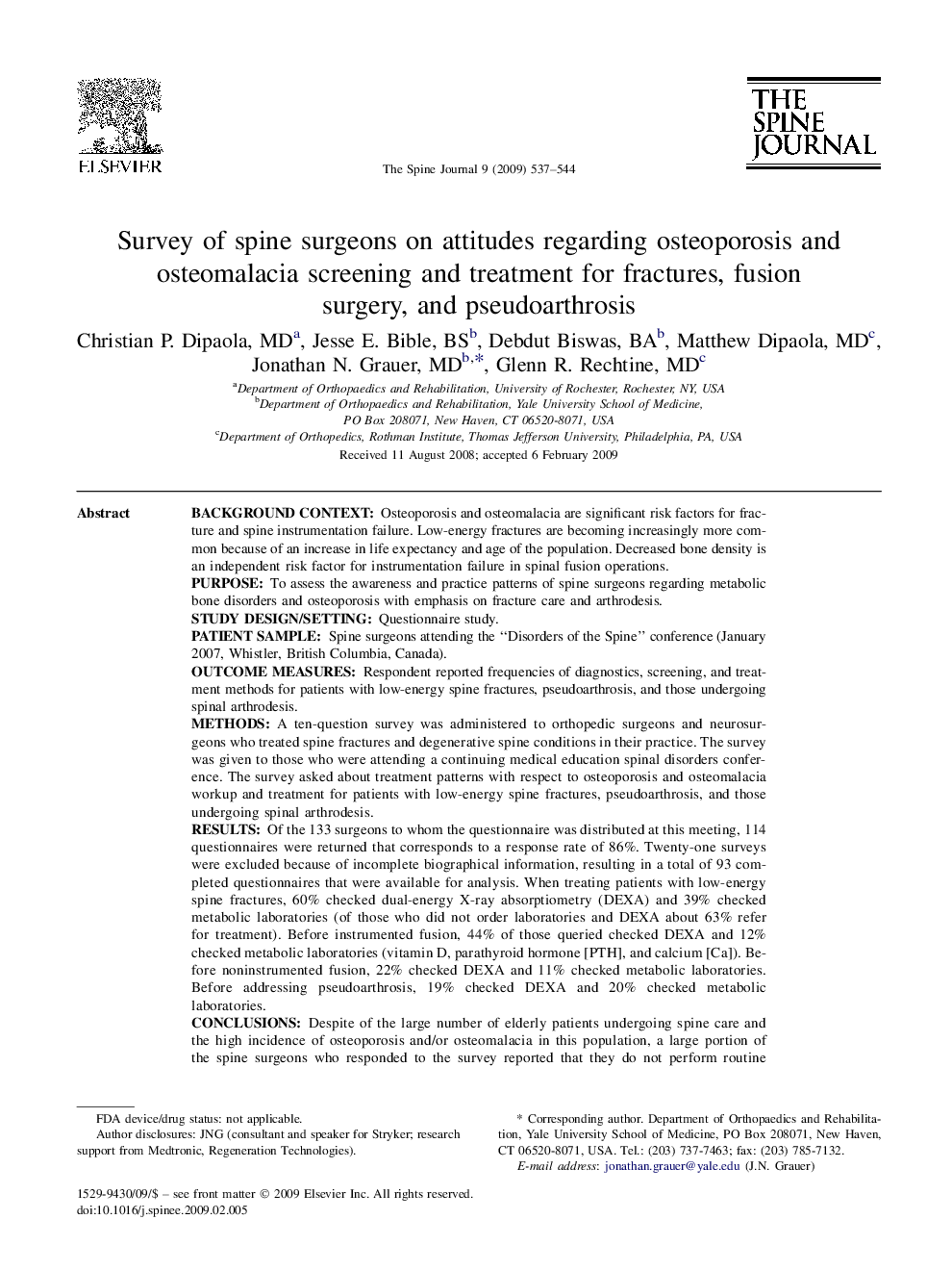| کد مقاله | کد نشریه | سال انتشار | مقاله انگلیسی | نسخه تمام متن |
|---|---|---|---|---|
| 4099588 | 1268645 | 2009 | 8 صفحه PDF | دانلود رایگان |

Background contextOsteoporosis and osteomalacia are significant risk factors for fracture and spine instrumentation failure. Low-energy fractures are becoming increasingly more common because of an increase in life expectancy and age of the population. Decreased bone density is an independent risk factor for instrumentation failure in spinal fusion operations.PurposeTo assess the awareness and practice patterns of spine surgeons regarding metabolic bone disorders and osteoporosis with emphasis on fracture care and arthrodesis.Study design/settingQuestionnaire study.Patient sampleSpine surgeons attending the “Disorders of the Spine” conference (January 2007, Whistler, British Columbia, Canada).Outcome measuresRespondent reported frequencies of diagnostics, screening, and treatment methods for patients with low-energy spine fractures, pseudoarthrosis, and those undergoing spinal arthrodesis.MethodsA ten-question survey was administered to orthopedic surgeons and neurosurgeons who treated spine fractures and degenerative spine conditions in their practice. The survey was given to those who were attending a continuing medical education spinal disorders conference. The survey asked about treatment patterns with respect to osteoporosis and osteomalacia workup and treatment for patients with low-energy spine fractures, pseudoarthrosis, and those undergoing spinal arthrodesis.ResultsOf the 133 surgeons to whom the questionnaire was distributed at this meeting, 114 questionnaires were returned that corresponds to a response rate of 86%. Twenty-one surveys were excluded because of incomplete biographical information, resulting in a total of 93 completed questionnaires that were available for analysis. When treating patients with low-energy spine fractures, 60% checked dual-energy X-ray absorptiometry (DEXA) and 39% checked metabolic laboratories (of those who did not order laboratories and DEXA about 63% refer for treatment). Before instrumented fusion, 44% of those queried checked DEXA and 12% checked metabolic laboratories (vitamin D, parathyroid hormone [PTH], and calcium [Ca]). Before noninstrumented fusion, 22% checked DEXA and 11% checked metabolic laboratories. Before addressing pseudoarthrosis, 19% checked DEXA and 20% checked metabolic laboratories.ConclusionsDespite of the large number of elderly patients undergoing spine care and the high incidence of osteoporosis and/or osteomalacia in this population, a large portion of the spine surgeons who responded to the survey reported that they do not perform routine osteoporosis/osteomalacia workups. Of those who do perform workups, some commented that it will change their surgical plan or preoperative treatment. It appears that there is a need for increased awareness among spine specialists regarding osteoporosis screening and treatment. Osteoporosis practice patterns may also be affected with newly evolving government quality reporting regulations.
Journal: The Spine Journal - Volume 9, Issue 7, July 2009, Pages 537–544